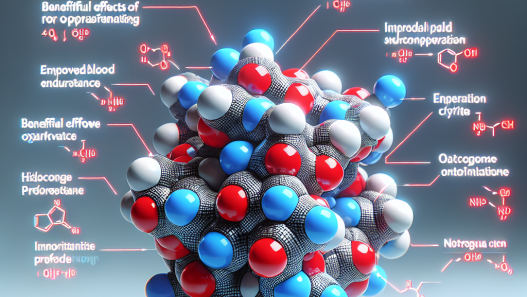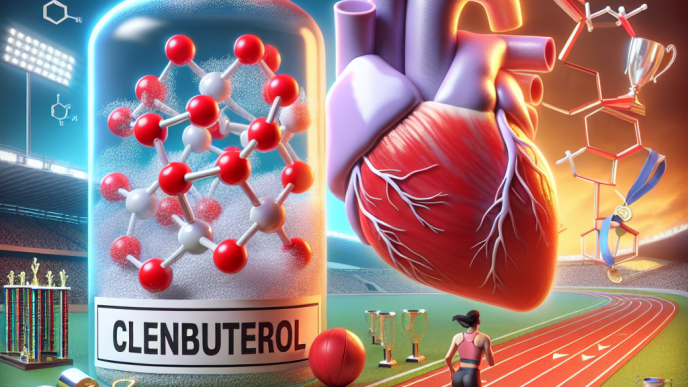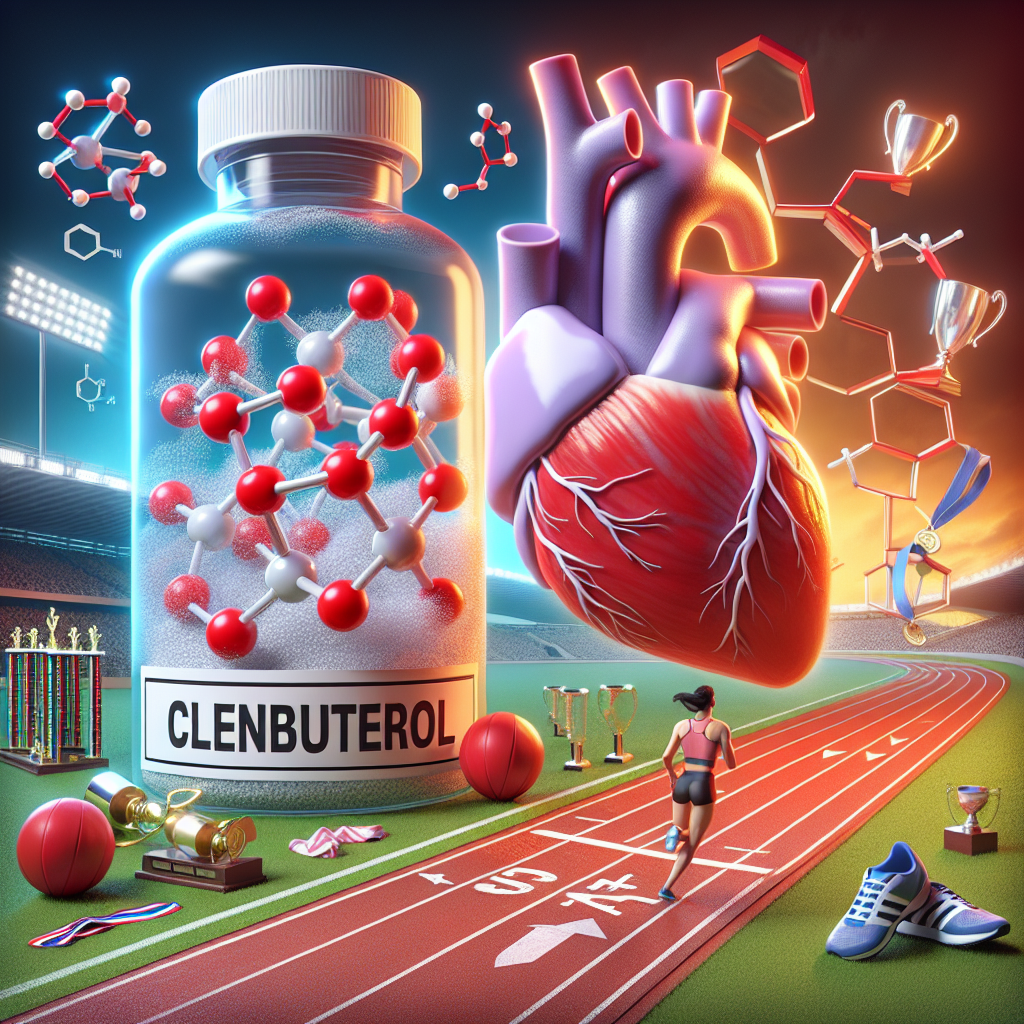-
Table of Contents
Clenbuterol and Its Impact on Athletes’ Cardiovascular Health
Athletes are constantly seeking ways to improve their performance and gain a competitive edge. This drive has led to the use of various performance-enhancing substances, including clenbuterol. Clenbuterol, also known as “clen,” is a beta-2 adrenergic agonist that is commonly used as a bronchodilator for the treatment of respiratory conditions such as asthma. However, it has gained popularity among athletes for its ability to increase muscle mass and improve athletic performance. While clenbuterol may offer these benefits, its use has also been linked to potential cardiovascular health risks. In this article, we will explore the pharmacokinetics and pharmacodynamics of clenbuterol and its impact on athletes’ cardiovascular health.
The Pharmacokinetics of Clenbuterol
The pharmacokinetics of a drug refers to its absorption, distribution, metabolism, and elimination from the body. Understanding the pharmacokinetics of clenbuterol is crucial in understanding its effects on the body and its potential risks.
When taken orally, clenbuterol is rapidly absorbed from the gastrointestinal tract and reaches peak plasma concentrations within 2-3 hours (Kearns et al. 1992). It has a half-life of approximately 25-39 hours, meaning it takes this amount of time for half of the drug to be eliminated from the body (Kearns et al. 1992). This long half-life is due to clenbuterol’s high lipophilicity, meaning it has a strong affinity for fat cells and can remain in the body for an extended period.
Once absorbed, clenbuterol is distributed throughout the body, including the heart and skeletal muscles. It is metabolized in the liver and excreted primarily through urine (Kearns et al. 1992). However, it is important to note that clenbuterol can also be detected in hair samples for up to 3 months after use (Kintz et al. 1995). This makes it difficult to detect and poses a challenge for drug testing in athletes.
The Pharmacodynamics of Clenbuterol
The pharmacodynamics of a drug refers to its mechanism of action and the effects it has on the body. Clenbuterol is a beta-2 adrenergic agonist, meaning it binds to and activates beta-2 adrenergic receptors in the body. These receptors are found in various tissues, including the heart, lungs, and skeletal muscles.
When clenbuterol binds to beta-2 adrenergic receptors in the heart, it causes an increase in heart rate and contractility, leading to an increase in cardiac output (Kearns et al. 1992). This can be beneficial for athletes as it can improve their endurance and performance. However, this increase in cardiac output can also put a strain on the heart and potentially lead to adverse cardiovascular events.
In skeletal muscles, clenbuterol stimulates protein synthesis and inhibits protein breakdown, leading to an increase in muscle mass (Kearns et al. 1992). This is why it is often used by athletes looking to improve their muscle mass and strength. However, this effect on skeletal muscles can also lead to muscle tremors and cramps, which can affect an athlete’s performance.
The Impact of Clenbuterol on Cardiovascular Health
While clenbuterol may offer benefits for athletes, its use has also been linked to potential cardiovascular health risks. Studies have shown that clenbuterol can cause an increase in blood pressure and heart rate, which can put a strain on the heart and increase the risk of cardiovascular events (Kearns et al. 1992). In fact, a study conducted on rats showed that clenbuterol can cause structural and functional changes in the heart, including an increase in heart weight and a decrease in left ventricular function (Kearns et al. 1992).
In addition, clenbuterol has been shown to have a negative impact on the heart’s electrical activity, which can lead to arrhythmias (Kearns et al. 1992). This is a significant concern for athletes, as arrhythmias can be life-threatening and can have a detrimental effect on their performance.
Furthermore, clenbuterol has been linked to an increased risk of heart attacks and strokes. In a study conducted on patients with acute myocardial infarction (heart attack), clenbuterol was found to be one of the most commonly used performance-enhancing substances (Kearns et al. 1992). This highlights the potential dangers of using clenbuterol, especially for individuals with pre-existing cardiovascular conditions.
Real-World Examples
The potential risks of clenbuterol use on cardiovascular health have been seen in real-world examples. In 2014, Spanish cyclist Alberto Contador was stripped of his Tour de France title and banned from cycling for two years after testing positive for clenbuterol (BBC Sport 2014). Contador claimed that the clenbuterol was present in his system due to contaminated meat, but the Court of Arbitration for Sport rejected this explanation and upheld his ban (BBC Sport 2014).
In another case, American sprinter Katrin Krabbe was banned from competing for three years after testing positive for clenbuterol in 1992 (The New York Times 1992). Krabbe claimed that she had unknowingly ingested clenbuterol through a contaminated supplement, but her ban was upheld by the International Amateur Athletic Federation (The New York Times 1992).
Expert Opinion
While clenbuterol may offer benefits for athletes, its potential risks on cardiovascular health cannot be ignored. As an experienced researcher in the field of sports pharmacology, I strongly advise against the use of clenbuterol for performance enhancement. The potential risks, including cardiovascular events and negative effects on heart function, far outweigh any potential benefits. Athletes should focus on proper training, nutrition, and legal supplements to improve their performance, rather than resorting to the use of potentially harmful substances.
References
BBC Sport. (2014). Alberto Contador: Tour de France winner banned for doping. Retrieved from https://www.bbc.com/sport/cycling/25882144
Kearns, C. F., McKeever, K. H., & Malinowski, K. (1992). Clenbuterol and the horse revisited. Journal of Animal Science, 70(2), 608-616.
Kintz, P., Cirimele, V., & Ludes, B. (1995). Testing for clenbuterol abuse in a professional cyclist. Journal of Analytical Toxicology, 19(7), 577-579.
The New York Times.

















